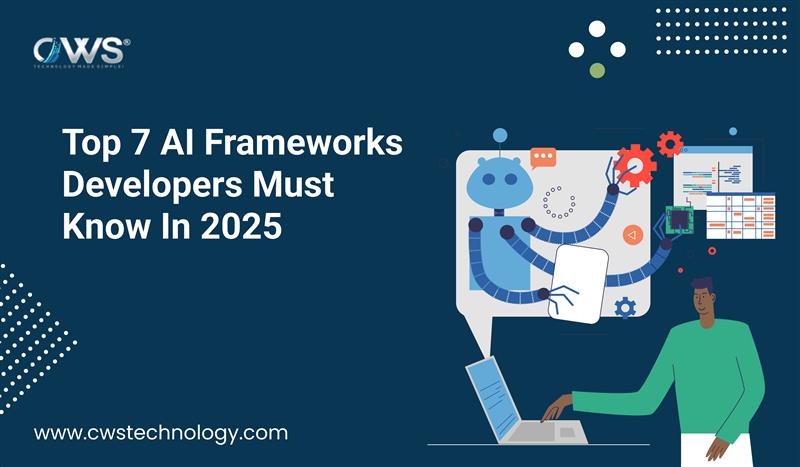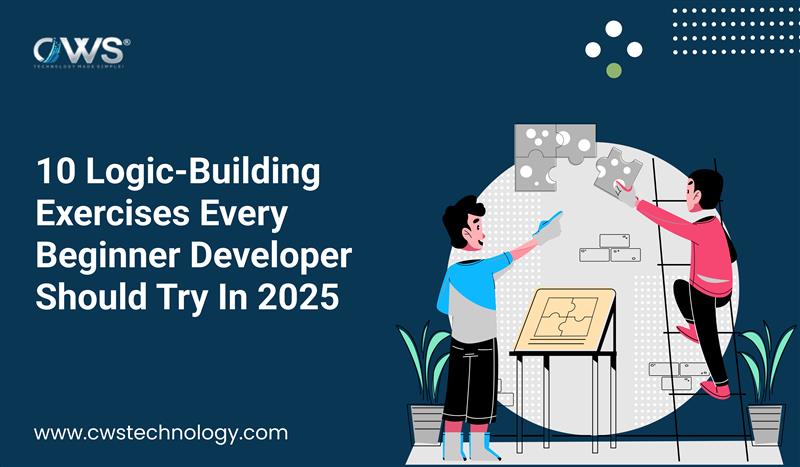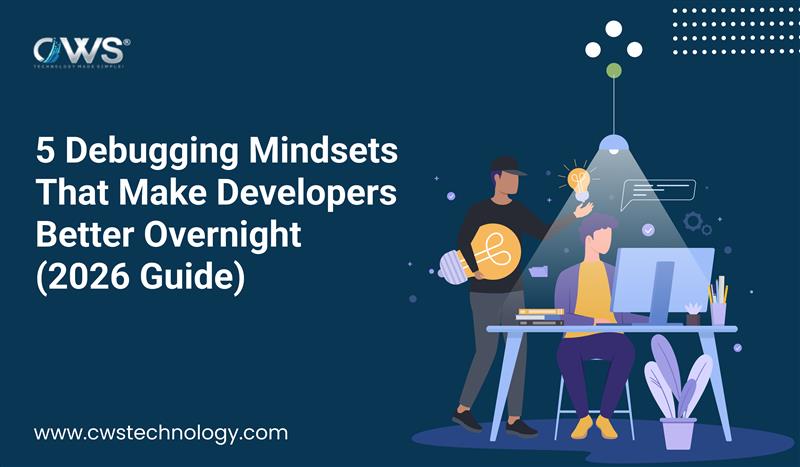AI frameworks 2025 are transforming the way developers build intelligent systems, automate workflows, and create next-generation software solutions. With the rapid advancements in artificial intelligence, machine learning, and natural language processing, developers need to stay ahead of the curve by mastering the right frameworks.
In this guide, we’ll explore the top 7 AI frameworks developers must know in 2025—from proven powerhouses like TensorFlow and PyTorch to rising tools like LangChain and Hugging Face that are redefining how AI models are built, trained, and deployed.
1. TensorFlow — The Industry Standard for Scalable AI
Developed by Google Brain, TensorFlow remains one of the most popular and reliable frameworks for deep learning and machine learning applications. It’s widely used in industries like healthcare, finance, and autonomous systems.
Key Features
- Offers both high-level and low-level APIs for flexibility.
- Supports deep neural networks, NLP, and image recognition.
- Integrates easily with TensorFlow Lite for mobile and embedded devices.
- TensorFlow.js allows running models directly in browsers.
Why It’s Relevant in 2025
TensorFlow continues to evolve with stronger GPU acceleration, efficient model serving via TensorFlow Extended (TFX), and compatibility with new hardware chips optimized for AI workloads.
Best Use Case: Building scalable deep learning models for production environments.
2. PyTorch — Developer-Friendly and Research-Oriented
PyTorch, developed by Meta (formerly Facebook), has become a favorite among AI researchers and developers due to its simplicity, dynamic computation graph, and Pythonic syntax.
Key Features
- Easy debugging with dynamic computation graphs.
- Strong community support and ecosystem.
- Native support for GPU acceleration.
- Ideal for prototyping and academic research.
Why It’s Relevant in 2025
PyTorch’s integration with tools like TorchServe and ONNX Runtime makes it perfect for deploying models efficiently. With PyTorch 2.0 offering performance improvements and quantization, it’s becoming more powerful for production use.
Best Use Case: Research-driven projects, NLP models, and rapid prototyping.
3. LangChain — Building Intelligent Language Applications
As large language models (LLMs) dominate 2025, LangChain has emerged as the go-to framework for developers building applications that interact with LLMs such as OpenAI’s GPT or Anthropic’s Claude.
Key Features
- Simplifies the integration of LLMs with APIs and databases.
- Offers “chains” for structured reasoning and multi-step AI workflows.
- Connects with vector databases like Pinecone, Weaviate, and FAISS.
- Supports prompt engineering and memory management for conversational AI.
Why It’s Relevant in 2025
LangChain bridges the gap between AI models and real-world applications. With increasing demand for AI chatbots, virtual assistants, and autonomous agents, it has become essential for developers working in NLP and conversational AI.
Best Use Case: Creating AI-powered chatbots, knowledge assistants, and automation tools.
4. Hugging Face Transformers — Democratising NLP and Generative AI
Hugging Face has revolutionised natural language processing through its Transformers library, enabling developers to use pre-trained models for text, speech, and image tasks with minimal setup.
Key Features
- 100,000+ pre-trained models available on Hugging Face Hub.
- Supports text classification, summarisation, translation, and image generation.
- Integrates with TensorFlow and PyTorch.
- Offers transformers, datasets, and accelerate libraries for end-to-end workflows.
Why It’s Relevant in 2025
With the growing use of multimodal AI systems (text + image + audio), Hugging Face continues to expand its ecosystem to support generative AI, diffusion models, and open-source collaborations.
Best Use Case: Leveraging pre-trained models for NLP, generative AI, and fine-tuning tasks.
5. JAX — High-Performance Machine Learning for Researchers
Developed by Google Research, JAX has gained popularity for its performance and flexibility in numerical computing and machine learning.
Key Features
- Designed for high-performance scientific computing.
- Combines NumPy syntax with GPU/TPU acceleration.
- Automatic differentiation for gradients and optimization.
- Seamless integration with frameworks like Flax and Haiku.
Why It’s Relevant in 2025
JAX’s composability and ability to run efficiently on modern hardware make it a favorite for AI research labs and experimental deep learning architectures.
Best Use Case: Experimental research, reinforcement learning, and scientific computation.
6. OpenAI API & SDK — The Gateway to LLM Integration
With OpenAI’s GPT models becoming part of mainstream software in 2025, developers increasingly rely on the OpenAI API and SDK to build intelligent features into their apps.
Key Features
- Easy integration for text, image, and speech generation.
- Tools like function calling and embeddings for custom data.
- Enterprise-grade API management and security features.
- Works seamlessly with frameworks like LangChain and FastAPI.
Why It’s Relevant in 2025
OpenAI’s developer ecosystem allows businesses to build scalable, AI-driven applications without needing to train models from scratch.
Best Use Case: AI chatbots, text summarisation, coding assistants, and content generation.
7. Fast.ai — Simplifying Deep Learning for Everyone
Fast.ai democratises deep learning by providing a user-friendly interface built on top of PyTorch. It makes AI accessible to developers who may not have a deep mathematical background.
Key Features
- High-level abstractions for common deep learning tasks.
- Pre-built models for vision, text, and tabular data.
- Rapid experimentation and model fine-tuning.
- Extensive online community and learning resources.
Why It’s Relevant in 2025
As AI education becomes more mainstream, Fast.ai’s simplicity and educational resources continue to empower the next generation of developers and data scientists.
Best Use Case: Beginners and educators focusing on practical deep learning applications.
Conclusion: Choosing the Right AI Framework in 2025
The landscape of AI frameworks in 2025 offers something for every developer — whether you’re scaling enterprise solutions with TensorFlow, experimenting with cutting-edge models using JAX, or building AI assistants through LangChain.
To stay competitive, developers should master at least two or three frameworks based on their project needs — one for deployment (like TensorFlow or PyTorch), one for language applications (like LangChain or Hugging Face), and one for research (like JAX).
Next Step: Start exploring these frameworks through tutorials, open-source projects, and hands-on experimentation to future-proof your AI development career.








